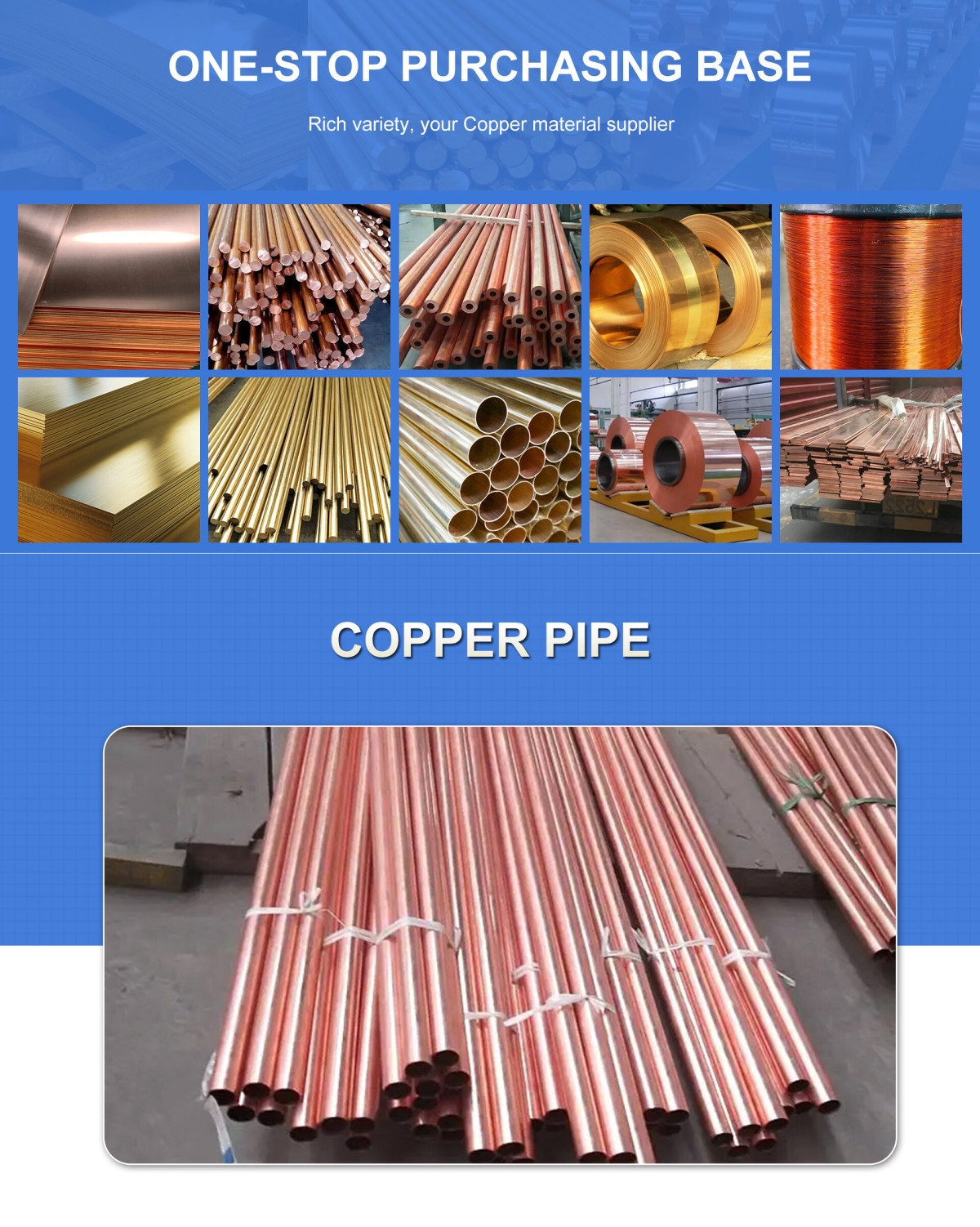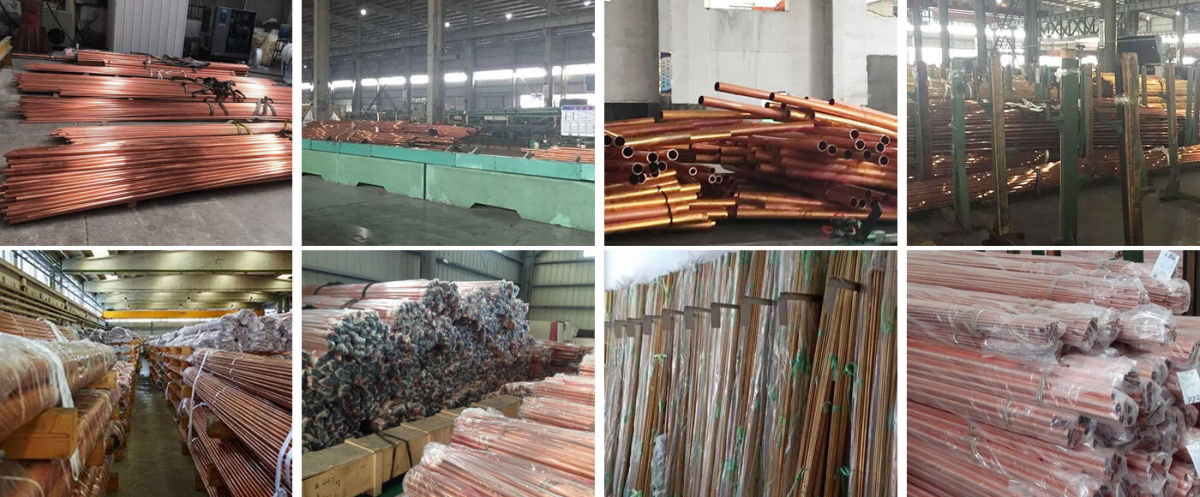
Size range (round tube)
Typical size parameters of C26800 brass tube are as follows:
Outer diameter range: 6 mm to 50.8 mm (approximately 1/4 inch to 2 inches).
Wall thickness range: 0.7 mm to 3 mm.
Tolerance requirements: The allowable deviation of the outer diameter complies with GB/T 16866 or ASTM B36 standards, depending on the application scenario.
Note: The above is a general range, and the actual size needs to be adjusted according to the specific standard (such as ASTM B36) and processing state (hard/soft state).
III. International standards
C26800 brass tube follows the following main standards:
American standard
ASTM B36 (brass rolled products)
ASTM B587 (welded brass tube)
SAE J461/J463 (material specification)
UNS number C26800.
European standard
EN CW506L (corresponding to the European grade of C26800).
Japanese Standard
JIS C2680 (Japanese Industrial Standard).
Chinese Standard
GB/T 5231-2012 (Processing copper and copper alloy grades), corresponding to H66 grade.
GB/T 13808-1992 (Application Specification for Brass Pipes).
Chemical composition (mass percentage):
Copper (Cu): 64.0%~68.5%
Zinc (Zn): Balance (about 31%~36%)
Lead (Pb): ≤0.15% (some standards such as ASTM stipulate ≤0.09%)
Iron (Fe): ≤0.05%
Other elements: such as boron (B) ≤0.01%, bismuth (Bi) ≤0.002%, etc., total impurity ≤0.45%
Mechanical properties vary significantly with processing conditions (such as annealing, cold working), and common conditions include H00 (soft state) to H10 (full hard state). Take the typical state as an example:
Annealed state (OS035):
Tensile strength: 345 MPa (50 ksi)
Elongation: 60%
Shear strength: 234 MPa (34 ksi)
Semi-hard state (H02):
Tensile strength: 607 MPa (88 ksi)
Elongation: 15%
Full hard state (H04):
Tensile strength: 758 MPa (110 ksi) or 510 MPa (74 ksi) (different test standards or data sources)
Elongation: 8%
Yield strength: 420 MPa (60 ksi)
Brinell hardness: 80 HB
Other conditions (H08):
Tensile strength: 883 MPa (128 ksi)
Elongation: 3%
Physical properties:
Melting point: liquidus 930°C (1710°F), solidus 904°C (1660°F)
Density: 8.1~8.47 g/cm³
Electrical conductivity: 27% IACS (International Annealed Copper Standard)
Thermal conductivity: 116~120 W/m·K
Coefficient of thermal expansion: 20~20.3 µm/m·°C (70~572°F)
Application and processing characteristics:
Corrosion resistance: good, but avoid contact with ammonia, mercury or acidic media to prevent stress corrosion or dezincification.
Processing performance:
Excellent cold working ability, suitable for stamping, drawing and other processes.
Poor hot forming ability, recommended annealing temperature 540~600°C (annealed state) or 800~1300°F (stress relief after cold working).

Production process and product advantages of C26800 copper tube:
1. Production process
The production process of C26800 copper tube mainly includes the following key steps:
Smelting: Use an industrial frequency furnace to melt cathode copper and phosphor copper alloy at a high temperature of 1200℃.
Continuous casting: The copper tube billet is formed by a horizontal continuous casting process and water-cooled to 50℃.
Rolling processing: Planetary rolling, triple drawing, coil drawing and other processes are used to refine the tube structure, and scraps and waste emulsion are generated during the process (need to be recycled).
Annealing treatment: The online annealing temperature is controlled at 540-600℃ to eliminate internal stress and improve plasticity.
Forming and surface treatment: including bending, welding, surface cleaning (using cleaning agent), rewinding flaw detection, etc., and finally the finished copper tube is obtained.
Note: Exhaust gas (such as G2-G4), waste mineral oil (S5) and noise pollution need to be controlled during the production process.
2. Product advantages
Excellent mechanical properties
Tensile strength ≥440 MPa, elongation ≥25%, with both high strength and toughness.
Excellent cold processing ability, suitable for complex forming processes such as stamping and deep drawing, but relatively weak machining performance (rating 30/100).
Outstanding corrosion resistance
Good resistance to atmospheric, fresh water and dezincification corrosion, suitable for corrosive environments such as ships and heat exchangers.
Wide processing adaptability
Supports hot processing (775-850℃) and cold processing, can be forged, extruded, rolled, and has excellent welding and brazing performance.
It can be processed into various forms such as pipes, plates, wires, etc. to meet complex industrial needs.
Electrical and thermal conductivity
Good electrical conductivity, resistivity of 38.4 micro-ohm-cm, suitable for electronic components and radiator manufacturing.
Wide application areas
Mainly used in radiator cores, air conditioning connecting pipes, valves, condensers, etc., and covering industries such as automobiles, construction, and electricity.
Q1:Do you provide samples? Is it free or extra?
A1:Yes, we can provide samples free of charge and the customer will pay the freight.
Q2:What if I don't have export experience ?
A2:We have reliable forwarder agent which can ship items to you by sea/air/Express to your doorstep. Any way, we will help you choose the most suitable shipping service.
Q3:How long is your lead time?
A3:If it is in stock, it is usually 5-10 days. Or, if there is no inventory, 15 days, depending on the quantity.
Q4:What are your terms of payment?
A4:30% T/T deposit in advance, 70% T/T balance within 5 days after B/L copy, 100%.Irrevocable L/C at sight, 100% Irrevocable L/C after receive B/L 30-120 days, O/A.
Q5:How is your technical support?
A5:We provide lifetime online support through Whatsapp/ Skype/ Wechat/ Email. Any problem after delivery, we will offer you call anytime.
Welcome To Your Inquiry
What can we help you?
RELATED PRODUCTS











